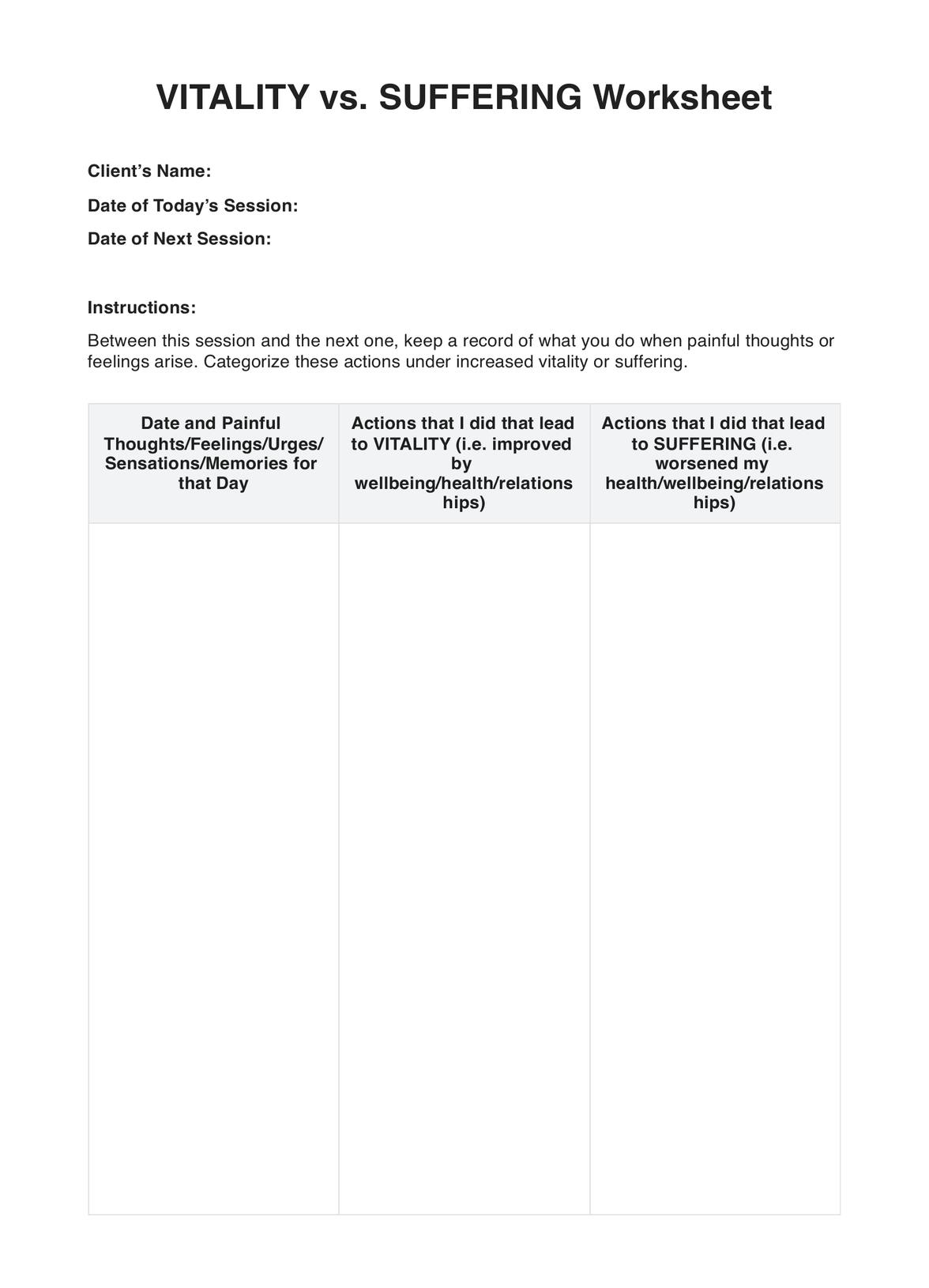Since this worksheet will be completed during specific periods of time, it can be hard to say when it will be accomplished. However, it’s safe to say that the client may take at least an hour to answer after having a painful/disturbing experience that day.

Vitality vs. Suffering ACT Worksheet
Help your patient identify and determine if their responses towards negative emotions/thoughts are beneficial or harmful for their well-being with a Vitality vs. Suffering ACT Worksheet.
Vitality vs. Suffering ACT Worksheet Template
Commonly asked questions
It can help them be more self-aware and accepting of the different types of reactions they may have to negative experiences, feelings, etc.
Practitioners who have training in ACT, like therapists, psychologists, counselors, and psychologists, can use and provide a copy of the Vitality vs. Suffering Worksheet to clients they feel need assistance dealing with painful and disturbing emotions, thoughts, etc.
EHR and practice management software
Get started for free
*No credit card required
Free
$0/usd
Unlimited clients
Telehealth
1GB of storage
Client portal text
Automated billing and online payments











